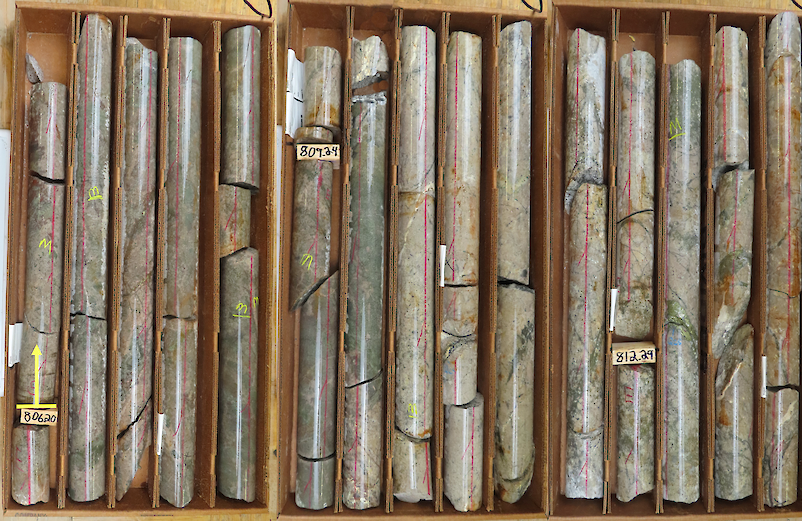Until June of this year, the gold and silver prices appeared to be following the more traditional pattern that tended lower. Then between $1,530 and $1,550, the price turned and headed upwards. It was then that the day-to-day pattern changed. A closer look at the long consolidation period that sent the gold price from $1,930 to $1,530 over the last year and more shows a changing pattern of large movements followed by narrower consolidations holding round a central price that held for a long time.
Quantity, Not Price
What's clear is that there were buyers who came in on the fall and restrained those falls to a narrower trading range. These buyers did not simply say, "Buy at a certain price" but appeared to ask their dealers for offers of gold and probably large ones too. Then these buyers took all that was offered to them. Their interest lay in the quantity of gold and not the price to be paid. What sort of buyer would not be concerned at the price but only at the quantity?
Traditional Market Buyers
Traders are just a little longer-term buyers and sellers than dealers. Dealers are there to make money too, not just to sell or buy gold and not simply to represent clients.
Sometimes a dealer can't avoid, at the end of the day, finding he has some stock on the books that must be held overnight. This will always make a dealer concerned with his 'book' as well as his profits. By his very nature a dealer is not particularly concerned with fundamentals, apart from knowing, at times, when he would prefer to be caught 'long' and when to be caught 'short' overnight. So a dealer will respond to the news he sees daily and move his prices in line with how he feels the news should affect his prices. It's only when the market reacts differently that he will change his direction. That's why we often see pieces of news that appear irrelevant to the gold price being labelled as price drivers.
Traders are unlike dealers in that they take positions for themselves and don't have an on-going 'book' to maintain. The trader, likewise, isn't too concerned with the fundamentals over the longer term, but adopts a similar attitude to the dealer. They are both working for profits, to be taken away from the market.
Both are following prices and very short-term trends with making a profit at the heart of their dealing. The fact that they are dealing in gold or silver makes little difference to their thinking except the relevance of short-term information. Both are therefore buying or selling constantly; opening positions and closing them as soon as they have their targeted profit. If they felt other markets, such as pork bellies, were profitable they would go in there too.
A dealer friend of ours told us that the best traders are successful on 52% of their trades. This can wear a man out quickly. Certainly, he's relying on his skill as a trader and not on the longer-term move of precious metal prices. He is not an investor. He is primarily concerned with price leaving quantity an indicator of profit potential.
The buyers who have been targeting quantity and not price are not in these categories. For them, we have to look elsewhere.
Investors
If a buyer is unconcerned about price but only quantity, he must by his dealing method, be a long-term, large buyer.
But institutions, whether they are pension fund managers or wealth funds and the like, do target profits. Many hedge funds too, aim to achieve a certain percentage profits return, per month, per quarter or per annum to earn their management fees and profit bonuses. This implies taking profits and using trading methods. Even the long-term pension funds sometimes place part of their fund into a trading portfolio to get more income for their contributors. Some of these institutions may have a yearly view or take a position for the long-term, but always with a dollar profit in mind. They have to for the sake of their future pensioners. Again to these type of investors price is important, critically so.
Yes, there are some investors who are prepared to hold for the very long-term until conditions change and make gold investments poor ones. Only then will they sell, but again, price is important to them. For instance, many of the buyers of the shares of gold ETF's have held them since the funds were formed and intend on holding them for as long as the economic and monetary future remains dark. But they don't have a pattern of buying that repetitively goes into the market to buy quantity irrespective of the price. That Takes us to Asian Buyers. . .
India
Indian investors are thought to hold in the region of 20,000 tonnes and keep returning to the market to buy more annually. Driven by religion and family financial security, they will continue to buy gold in line with their disposable income. Right now they're holding back outside of the festivals, such a Diwali, the Festival of Lights, that happens in October. This is when religion and family overrule price. But where they can, they make sure that they don't buy when they believe the Rupee gold price is likely to fall. They like to enter the market when the Rupee price has dropped substantially or held at a particular level forming a 'floor' price, reassuring them that the next move will be either sideways or up.
What has complicated their lives is the performance of the currency they measure gold's price in. The Indian rupee has been extremely weak over the last few months. It was not much more than a year ago that the Indian rupee traded at Rs.42 to the U.S. dollar. It fell heavily since then to a low of over Rs.57 to the U.S. dollar. This changed the rupee price of gold significantly giving the appearance of a rising gold price. This deterred their buying.
In the last month the Indian rupee has strengthened to Rs.52 giving the appearance of a falling gold price when in fact the dollar gold price was rising. This has turned Indian buyers, ahead of Diwali, back into the gold market to buy.
But Indian buyers are price- and quantity-conscious, limited by their available disposable income. As the gold price rises, so the quantity of gold they are able to buy falls, unless their income is rising at the same pace.
China
The retail buyer out of China has often come into money for the first time in his life. Before that he was toiling in the countryside hoping to just get by. With China's phenomenal growth, he has been lifted up financially to the point where he can now save considerably more than he could before. The second type of retail buyer reached that level much earlier and has long past covering his needs and some savings. He is growing wealthy, so able to buy much more gold. His own government is encouraging him to do so. By nature, the Chinese man is a saver, saving up to as much as 40% of his income. Seven per cent of his income is targeting gold investments. Inflation is high in China and eats into the income he can gain from any fixed deposits that he has at the bank. By matching the total return on deposits to the total return on gold, he is seeing gold's performance continue to recommend itself to him.
Nevertheless he is limited by his disposable income and is concerned that the price he pays is one that he feels will not fall back after he has bought.
The buyer we're looking to identify is unconcerned at the price and is not limited by it and has sufficient money to spend to buy all that is offered to him.
Central Bankers
A central banker is the one gold buyer that fits the bill of the gold investor, unconcerned at the price he pays and interested in acquiring quantity.
After all, he's diversifying the foreign exchange reserves of the nation when he buys. Gold has been pushed to one side for over forty years and has been always considered as a very important reserve asset. That's why the top four wealthiest nations hold more than 70% of their reserves in gold. But they're not current buyers. It's those central bankers who have too little gold as a percentage of their reserves in gold that are buying now. They don't want to have to depend entirely on the currencies they hold in the national portfolio when hard times hit.
Gold acts as a 'counter' to these currencies and has done so throughout history. But for the last forty years, it has not been recognized as such despite the fact that since the late sixties, it has risen in price over 50 times.
Central bankers are wiser than that. They have always known that gold is money that will act to measure the real value of currencies. It is currencies that are the weakening link in the money system. So when a central bank is buying gold, it knows that it's simply changing one form of money for another. And that's why, relative to the available quantities of gold in the market place, he has endless funds. That's why he wants quantity. He has far too little so wants as much as he can get without upsetting the market.
Julian Phillips
www.GoldForecaster.com
www.SilverForecaster.com
Legal Notice / Disclaimer
This document is not and should not be construed as an offer to sell or the solicitation of an offer to purchase or subscribe for any investment. Gold Forecaster - Global Watch / Julian D. W. Phillips / Peter Spina, have based this document on information obtained from sources it believes to be reliable but which it has not independently verified; Gold Forecaster - Global Watch / Julian D. W. Phillips / Peter Spina make no guarantee, representation or warranty and accepts no responsibility or liability as to its accuracy or completeness. Expressions of opinion are those of Gold Forecaster - Global Watch / Julian D. W. Phillips / Peter Spina only and are subject to change without notice. Gold Forecaster - Global Watch / Julian D. W. Phillips / Peter Spina assume no warranty, liability or guarantee for the current relevance, correctness or completeness of any information provided within this Report and will not be held liable for the consequence of reliance upon any opinion or statement contained herein or any omission. Furthermore, we assume no liability for any direct or indirect loss or damage or, in particular, for lost profit, which you may incur as a result of the use and existence of the information, provided within this Report.



































